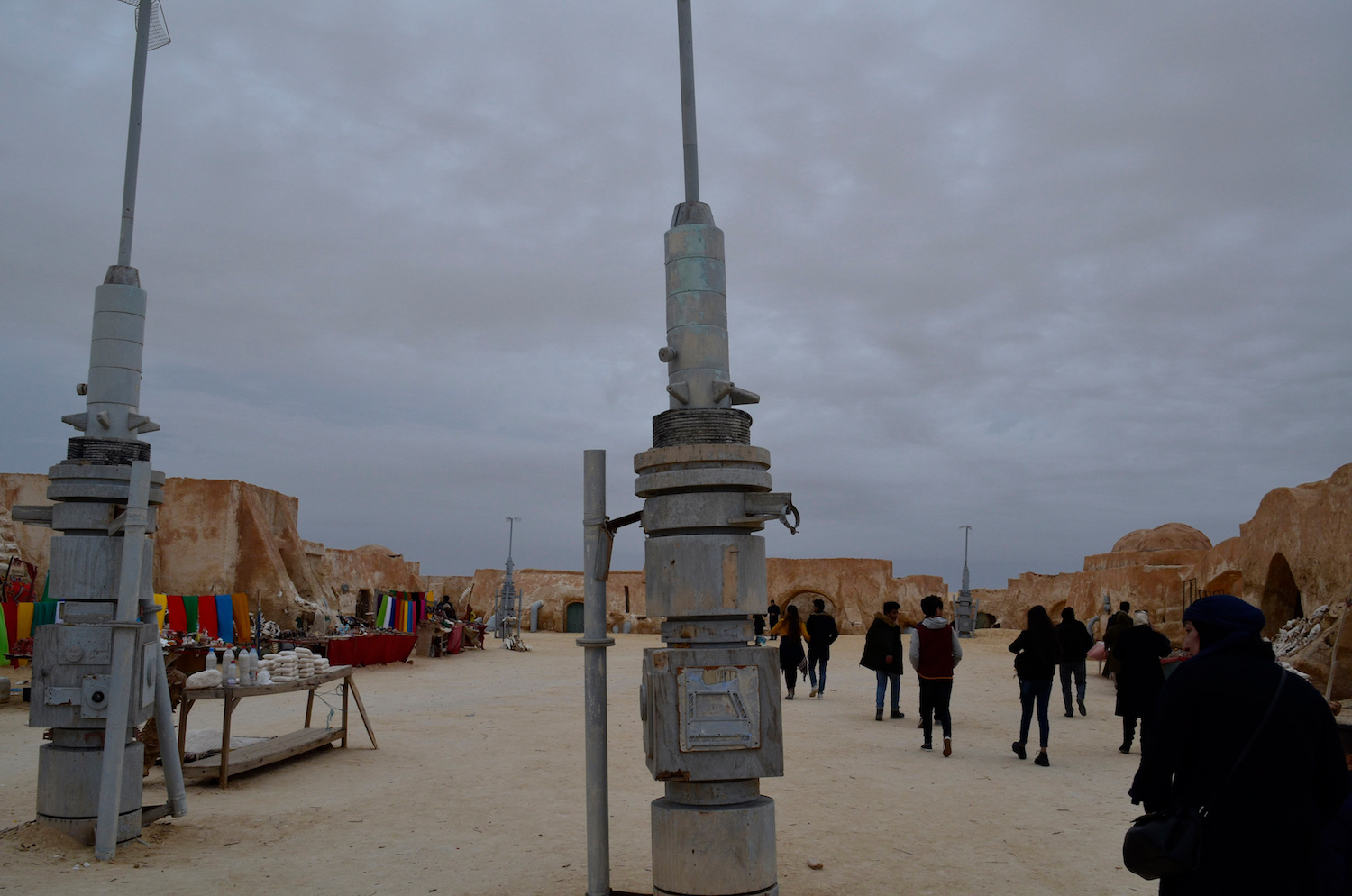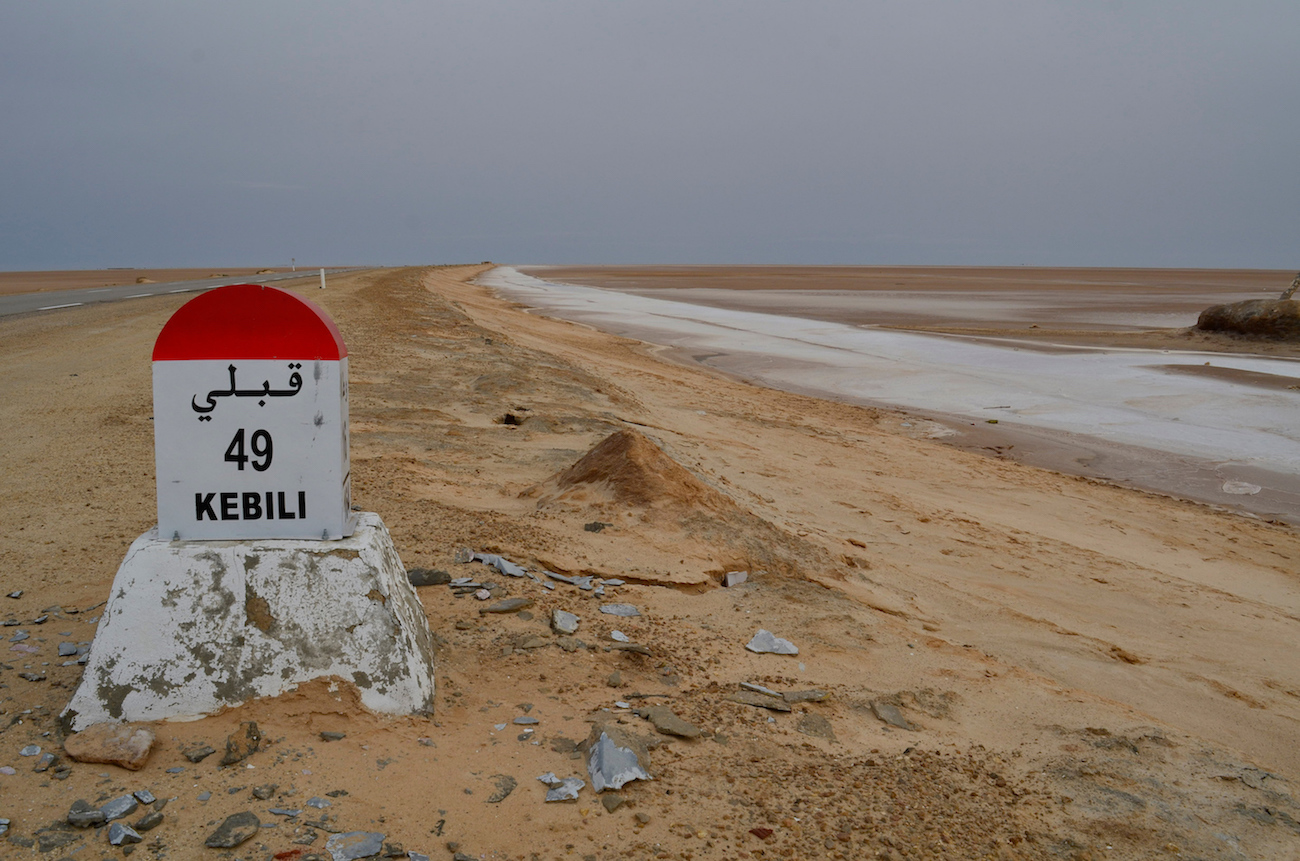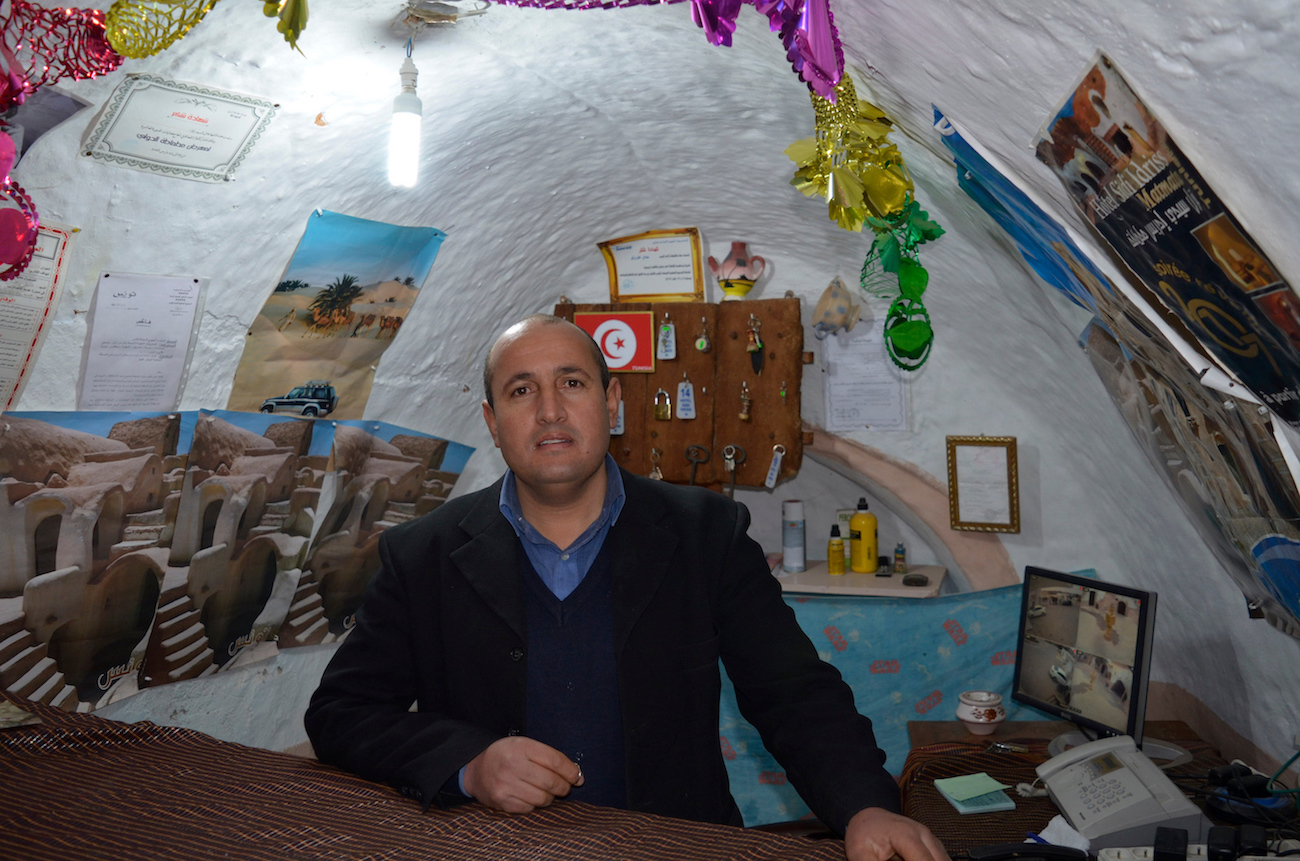チュニジア南部の砂漠地帯。さすがに「スターウォーズ」オリジナル・トリロジーのロケ地というだけはある。この人里離れた砂漠の風景は、じっさいまるで別惑星だ。
チュニジアの広大な砂漠地帯のひとつには、ルーク・スカイウォーカーの故郷、「惑星タトゥイーン」と似た響きの、「タタウイヌ」と呼ばれる地まである。
主人公のルーク・スカイウォーカーが叔父・叔母とともに住んでいた地下の家は、映画撮影が行われた様々な砂漠のロケ地の一つ、マトマタの町に今でも実在するホテルだ。

Cain Burdeau via AP
「本当に映画みたいです」そう言ったのは、ホテル・シディ・ドリスを最近訪れた二人組の若いイタリア人旅行者の一人で、プロテニスプレーヤーのロレンツォ・ベリッシャーニ氏。「映画の中で見ると、『ふむ。なるほど』くらいにしか思いませんが。実際ここに来てみると、まったく別の感動があります」
ホテルオーナーのマスード・ベラシャド氏の話では、2011年のチュニジアの民主革命以降、とくに観光客が被害にあった2015年のテロ攻撃以降、訪問者数は大きく減ったという。
それでもなお、根強く訪れるスターウォーズファンの支えもあって、ホテルは何とか経営を続けている。「ファンたちは、ここに来て大量の写真をとります」とオーナーは語る。「彼らは本当に幸せそうです。何時間でも、ずっとここで飽きずに過ごしていきますよ」
観光以外には、この地に仕事は少ない。マトマタの町の人口は、より現代的な生活を求めて人々が去り、減少の一途をたどっている。
- Cain Burdeau via AP
ベルベル人
この「スターウォーズの家」は、1969年にホテルになる以前は、先住民族ベルベル人が暮らす伝統的な家だった。ローマ人やアラブ人と強固な同盟関係を結んで以降、ベルベル人は北アフリカ・ヨーロッパ史においてきわめて重要な役割を果たした。読者の皆さんは、「スターウォーズ」の作中でC-3POとR2-D2を捕獲した、フードをかぶった金属スクラップ商の辺境部族「ジャワ」を覚えているだろうか? オビ=ワン・ケノービの服にも通ずることだが、あのジャワたちがまとっていた暗い色の尖ったフードとマントは、じつは伝統的なベルベルの衣装に酷似している。
マトマタの住居も含め、もともとベルベル人の地下住居は、砂漠の熱を避け、敵から身を隠す場所として、砂岩を刻んで建造された。現在このような住居に実際に住む人はほとんどいない。しかしながらその一部は博物館として今でも保存されており、約25年前まで実際人が住んでいたマバブ・テオウビ氏所有の家屋もその一つだ。
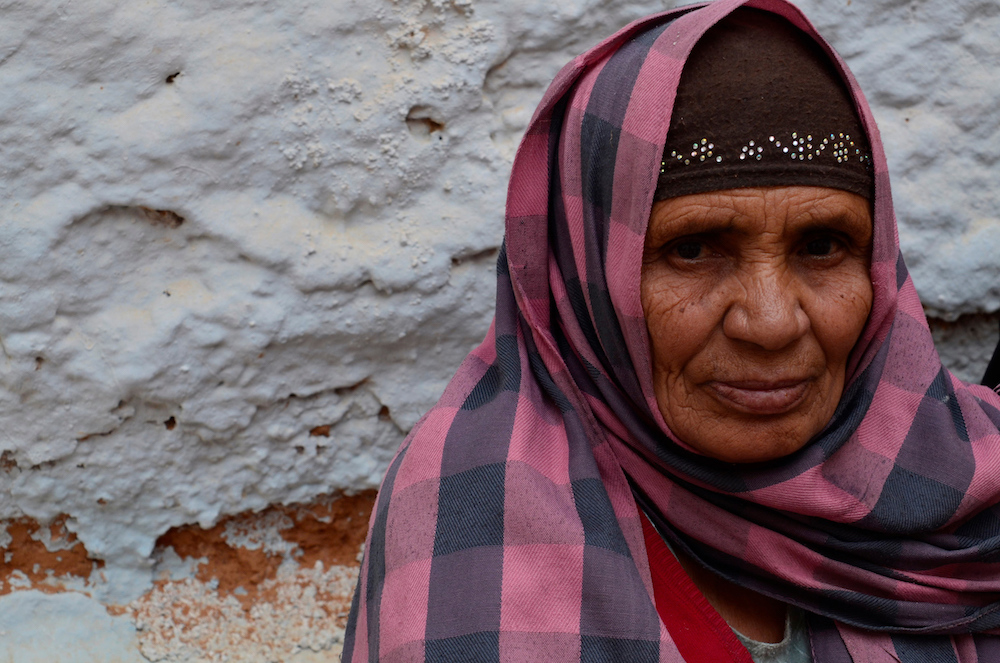
大半のベルベルの地下住居と同様、その家は、空の見える吹き抜けの中庭を中心に築かれていた。「兄弟全員がひとつの部屋で暮らしていました。また別の部屋には、いとこたちが住んでいました」とテオウビ氏は語った。「それぞれの部屋ごとに用途が決まっていました」そう言って彼女はひとつの小部屋を紹介した。そこは、はしごを使わないと入れない構造で、家族の食料庫として、また、穀物を挽く石の保管庫としても使われていたという。「何もかもが、人の手で造られたのです」
遠く離れた泉からラクダで水を運び、常に食べ物を探し回らないといけない苦労の多い日々だったが、彼女は当時をふりかえり、今ではそれがなつかしいと言った。

Cain Burdeau via AP
砂漠の旅
この砂の地に至るまでに、見わたす限りの大平原を長く越えてきた。ひたすら直線に延びる高速道路は、石油が豊富なガベス、リンを産するガフサなど、複数の工業都市を貫いている。沿道では、売り子たちが鍋で煮だした紅茶や菓子類、美しい陶器などを売る。また、山積みで売られるポリタンクの中身は、近隣のアルジェリアやリビアから密輸された安価なガソリンだ。寂しくうらびれた道路沿いの町々で唯一繁盛しているのは、コーヒーショップ。そこでは男たちが水タバコを吸い、カードゲームに興じている。
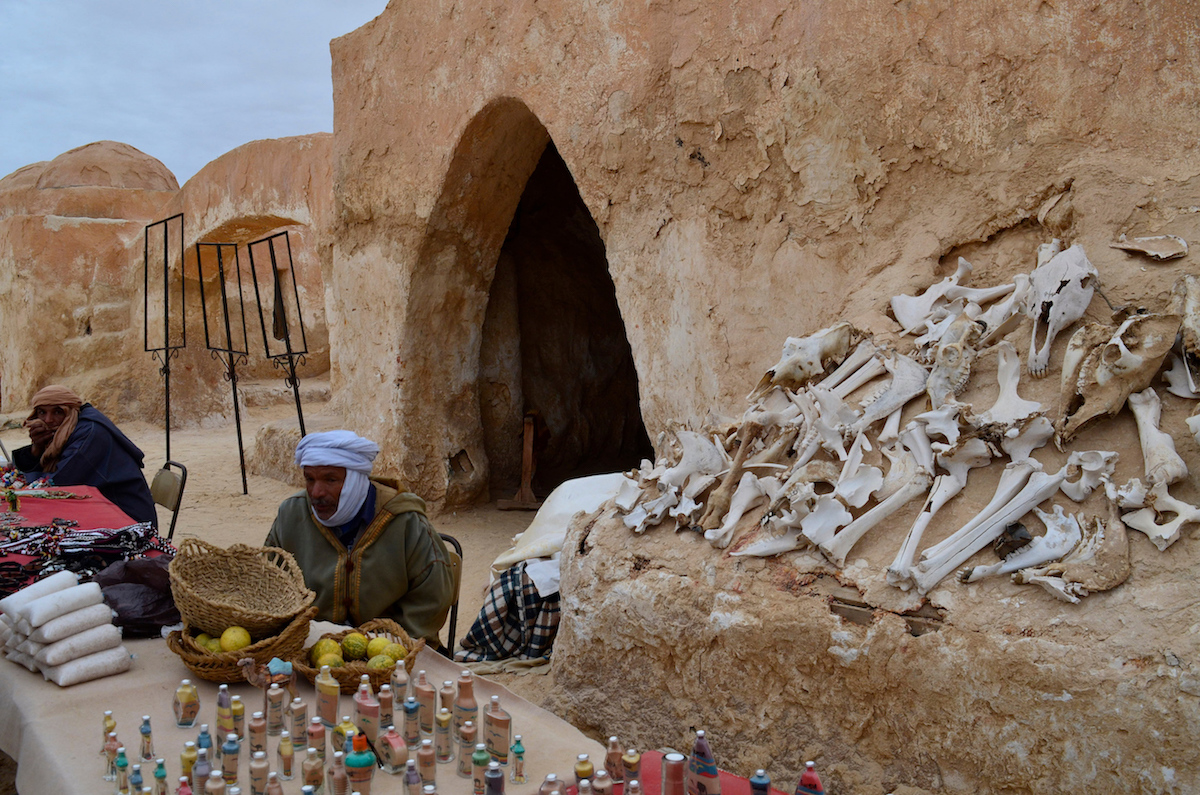
Cain Burdeau via AP
丘の上にあるタムズレと呼ばれるベルベル人の町は、石作りの家と壁とが複雑に入り組む迷宮だ。50歳のベルベル人の職人モンジ・ブラス氏は、岩穴を刻んで造った古い家を、手間暇をかけて博物館に変え、そこで民族の歴史を紹介している。
ドレス、キルト、絨毯、伝統衣装を着たマネキン。彼の博物館の中は、華やかな手作りの伝統工芸品で溢れている。その他に、どこのベルベル家庭でも見られる道具類や物品類―― 例えば乳鉢や、アンフォラと呼ばれる二つの持ち手付きの甕(かめ)なども展示している。
ブラス氏によると、ベルベルの工芸品やデザインパターンの一部には、自然崇拝、ユダヤ教、キリスト教、イスラム教徒など、様々な宗教のシンボルが取り入れられている。丹念に織られた織物や絨毯には、キリスト教のクロス、イスラムの三日月、そのほか自然崇拝の様々なシンボルが織り込まれている。
家の戸口は低く、訪問者は頭を下げないと入れない。とある部屋で、ブラス氏が色彩豊かなカーペットを持ち上げ、その下の床に作られた木製のドアを示した。これはかつて、水を運ぶ目的で家の住人が使っていた長さ1キロのトンネルの入り口だ。その当時、地下道の中は油のランプで照らされていた。「そのとき燃やしたオリーブオイルの煙の名残が、今もまだここに残っています」とブラス氏は説明した。
映画撮影セットの廃墟
さらに足をのばし、サハラ砂漠に近づく。ひたすらに続く地平線。行きかう車はまばらだ。景色のところどころに、山の姿が入りこむ。
そして何の前触れもなく、その町が現れる。ドゥーズの町。町のレストランのメニューには、ラクダの乳、子羊の頭、地中海産の魚のグリルなどがあった。さらに進む。サハラ砂漠の入口に位置する都市トズール。ここには多くの店や、ライトアップされたモスク、カフェ、複数の市場が集まり、交通も多くにぎやかだ。
このトズールの郊外の砂丘の上に、奇妙な光景が展開する。スターウォーズ作中に「モス・エスパ」の名で登場した宇宙港都市の撮影セットの跡地だ。ここでは今、民芸品の売り子たちのほか、押しの強い少年たちが観光客相手に商売をする。彼らは客をラクダの背にのせ、あるいは耳の長い砂漠のキツネと一緒にポーズをとらせ、写真を撮る。
太陽が西の地平に近づくと、周囲の砂漠が奇妙な色と形を取りはじめる。この時刻、ここはまるで、本当に別の惑星であるかのようだ。
—
By CAIN BURDEAU, Associated Press
MATMATA, Tunisia (AP)
There’s a reason the original “Star Wars” movie was filmed here in the deserts of southern Tunisia. This stark, remote landscape looks like another planet.
One of Tunisia’s vast desert regions is even called Tataouine, like Luke Skywalker’s home planet, Tattoine.
And the underground home where Luke Skywalker first appeared living with his uncle and aunt is a real hotel in the town of Matmata, one of various desert locations used in the movies.
“It looks just like the film,” said Lorenzo Bresciani, one of two young touring Italian professional tennis players who recently visited the Hotel Sidi Driss. “When you see it on the film, you say, ‘OK.’ But when you are here, it has another effect.”
Hotel owner Masoud Berachad says visitors have dropped off since Tunisia’s democratic revolution in 2011 and since terror attacks killed tourists in 2015.
Still, “Star Wars” fans keep the hotel in business. “They come and take so many pictures,” Berachad said. “You can see how happy they are. They can stay here for hours and hours.”
Aside from tourism, though, jobs here are scarce. Matmata’s population is dwindling as people leave for a more modern life elsewhere.
THE BERBERS
Before becoming a hotel in 1969, the “Star Wars” dwelling was a traditional home used by indigenous Berbers. The Berbers played a major role in the history of North Africa and Europe after forming powerful alliances with Romans and Arabs. Remember the Jawas from “Star Wars,” the hooded fellows who trade in scrap metal and capture C-3PO and R2-D2? Their dark cloaks and pointed hoods resemble the garments of traditional Berbers, as does Obi-Wan Kenobi in his cloak.
The Berbers’ underground dwellings, like the Matmata house, were carved from sandstone to offer shelter from heat and a place to hide from enemies. Few people live that way today, but some dwellings have been preserved as museums, including one owned by Mahboub Theouibi, whose family moved into a modern house about 25 years ago.
Like most of the dwellings, theirs was built with a central courtyard open to the sky. “Brothers lived in the same room, cousins in another,” she said. “Each room had a purpose.” She pointed to a small room accessible only by ladder, where the family stored food, and a stone for milling grains. “Everything was made by hand,” she said.
She remembered her life there fondly, despite hardships like carrying water by camel from a spring far away and the daily search for food.
A DESERT JOURNEY
It’s a long journey across wide-open plateaus to this desert terrain. Long, straight highways pass industrial cities such as oil-rich Gabes and phosphate-producing Gafsa. Vendors by the roadside sell tea boiled in fire-warmed pots, pastries and beautiful ceramics. Stacks of jerry cans hold cheap gas smuggled in from neighboring Algeria and Libya. In lonely-looking and half-finished towns along the way, the only businesses seem to be coffee shops filled with men smoking hookahs and playing cards.
A jumble of walls and stone homes mark a Berber town on a hill called Tamezret. Here Mongi Bouras, a 50-year-old Berber artisan, has meticulously turned an old cave home into a museum to showcase his people’s history.
His museum is filled with his gorgeous traditional artwork, all handmade: dresses, quilts, carpets, mannequins adorned in traditional clothing. It’s also full of tools and objects that would have been found in a Berber home, like pestles and the two-handled jars called amphorae.
He said animistic, Jewish, Christian and Muslim symbols became part of Berber crafts and patterns, and his work reflects that: In his laboriously woven garments and carpets there is a Star of David, a Christian cross, an Islamic crescent moon and naturalistic representations.
The low doorways, he said, forced visitors to bow out of courtesy. In one room, he lifted a colorful carpet to reveal a wooden door in the floor. This used to be the entrance to a 1-kilometer-deep tunnel once used by inhabitants to get water, their path lit by oil lamps. “The sign of the smoke from olive oil is still there,” he said.
AN ABANDONED FILM SET
Farther on, the Sahara gets closer. The horizons stretch longer. Traffic is sparse. Mountain profiles etch the landscape.
Out of nowhere, a town appears: Douz. A restaurant menu lists camel’s milk, lamb’s head and grilled fish trucked in from the Mediterranean. Another city on the edge of the Sahara, Tozeur, is busy with shops, lit-up mosques, cafes, markets, traffic.
Then, just outside Tozeur, a bizarre sight appears over the top of a sand dune: an abandoned film set from another “Star Wars” location, a place called Mos Espa in the films. Vendors sell crafts and pushy boys try to get tourists to pose for photographs atop camels or with long-eared desert foxes.
As the sun falls, the dunes and desert take on strange shapes and colors. It’s as if they truly belong on another planet.
By CAIN BURDEAU, Associated Press
MATMATA, Tunisia (AP)



